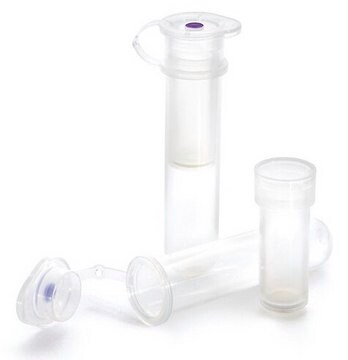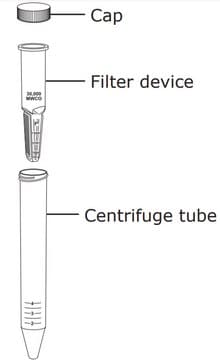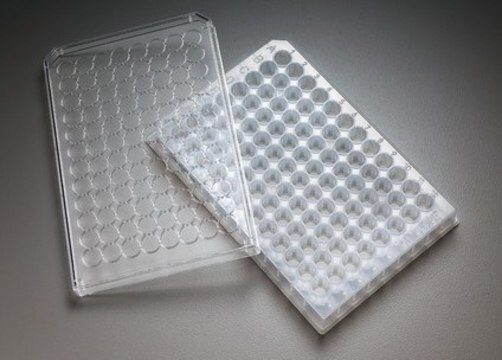UFC30LG25
Ultrafree® Centrifugal Filter, 0.4 mL Sample Volume
pore size 0.2 μm, PTFE membrane (hydrophilic)
Synonym(s):
Centrifuge filter
Sign Into View Organizational & Contract Pricing
All Photos(1)
About This Item
UNSPSC Code:
41104916
eCl@ss:
36100101
NACRES:
NB.24
Recommended Products
material
PTFE membrane (hydrophilic)
polypropylene
sterility
non-sterile
feature
holdup volume 5 μL
manufacturer/tradename
Ultrafree®
parameter
0.4 mL sample volume
50 °C max. temp.
technique(s)
protein extraction: suitable
protein purification: suitable
L
45 mm
diam.
10.6 mm
filtration area
0.2 cm2
pore size
0.2 μm pore size
application(s)
sample preparation
shipped in
ambient
Related Categories
General description
Ultrafree®-MC (0.5 mL) and Ultrafree-CL (2 mL) centrifugal devices are single-use, disposable filters used for removing particulates from aqueous biological solutions. These devices are available in two processing volumes with a range of microporous membranes (from 0.1 to 5.0 µm) for fast filtration and highly reproducible performance. Pre-sterilized units are also available. Use in fixed-angle rotors for 1.5 mL tubes (-MC) and 15 mL tubes (–CL).
•Five different pore sizes from 0.1 to 5.0 µm
•Pre-sterilized units also available
•Fast filtration and highly reproducible performance
•Use in fixed-angle rotors for 1.5 mL tubes
Applications
•Removal of particles and precipitates from aqueous and some solvent-based samples
•Ideal for use with protein and nucleic acid solutions
•Five different pore sizes from 0.1 to 5.0 µm
•Pre-sterilized units also available
•Fast filtration and highly reproducible performance
•Use in fixed-angle rotors for 1.5 mL tubes
Applications
•Removal of particles and precipitates from aqueous and some solvent-based samples
•Ideal for use with protein and nucleic acid solutions
Application
0.2 µm pore size, hydrophilic PTFE, 0.4 mL volume, non-sterile
Fixed-angle microfuge rotor w/maximum 12,000 xg max
Physical form
Color Code: Yellow
Legal Information
Ultrafree is a registered trademark of Merck KGaA, Darmstadt, Germany
Certificates of Analysis (COA)
Search for Certificates of Analysis (COA) by entering the products Lot/Batch Number. Lot and Batch Numbers can be found on a product’s label following the words ‘Lot’ or ‘Batch’.
Already Own This Product?
Find documentation for the products that you have recently purchased in the Document Library.
Customers Also Viewed
Pengfei Cao et al.
eLife, 8 (2019-12-07)
The target of rapamycin (TOR) kinase is an evolutionarily conserved hub of nutrient sensing and metabolic signaling. In plants, a functional connection of TOR activation with glucose availability was demonstrated, while it is yet unclear whether branched-chain amino acids (BCAAs)
Our team of scientists has experience in all areas of research including Life Science, Material Science, Chemical Synthesis, Chromatography, Analytical and many others.
Contact Technical Service





